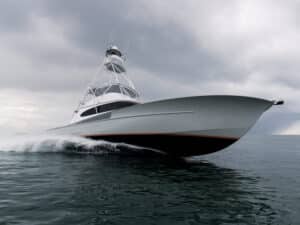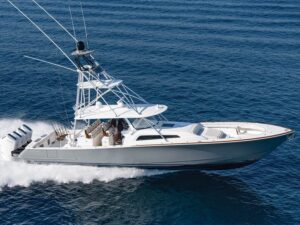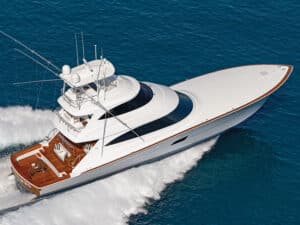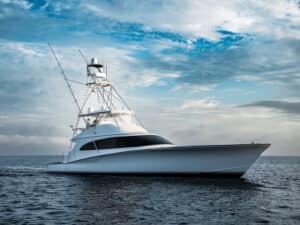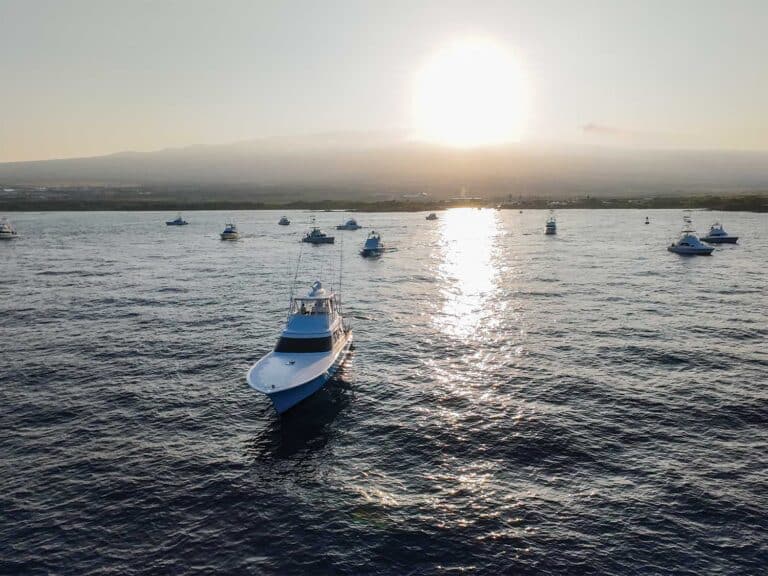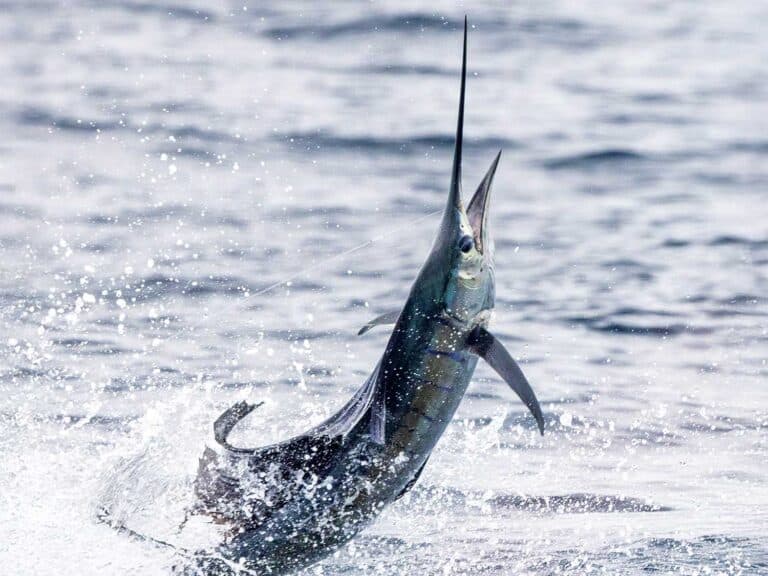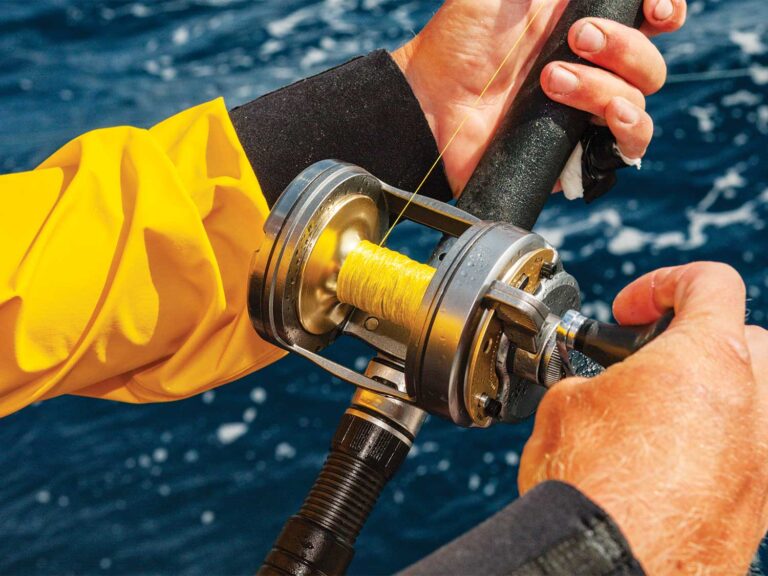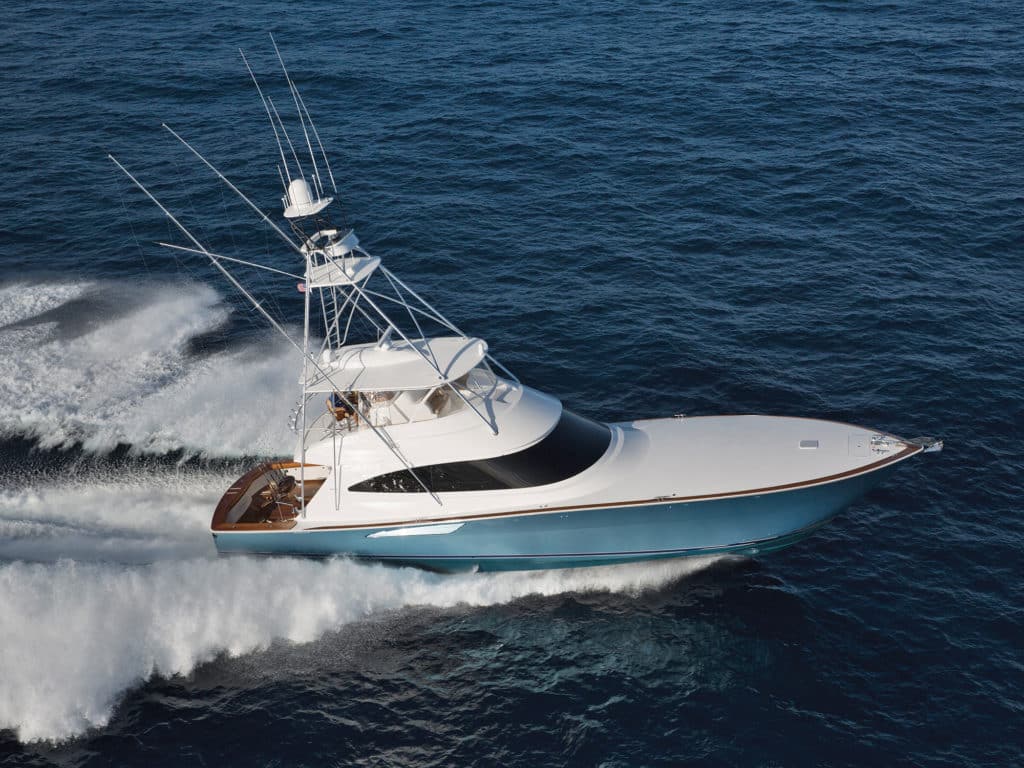
By all standards, the Viking 70 Convertible was as good a boat as it gets. She struck the balance between power and purpose, and the legendary model remained at the top of the heap, earning her stripes as a sea-proven performer.
“The 70 Viking is an iconic boat,” says Viking President Patrick Healey as we stand in the cockpit of the new 72C, getting ready for a sea trial off Atlantic City, New Jersey. “What we did, after building 36 of them over a period of five and a half years, is the same thing we accomplished with our other recent boat models,” he adds. “We just made it better.”
Cockpit
The overall plan was to completely utilize some 24 to 28 inches of new space in the cockpit and other places throughout the vessel. “Take, for example, the area right in back of the Release chair,” notes Capt. Ryan Higgins, the company’s corporate skipper and a member of the Viking brain trust.
“When the action is hot and heavy — especially during white marlin fishing — a serious traffic jam is highly probable, with anglers and mates going every which way,” he says as he points out the additional 8 inches of space now provided between the outer edge of the mezzanine and the chair.
Another noticeable change can be seen in the inward curve of the mezzanine’s base. In past years, and as far back as when Viking first started using the mezzanine design, that curve always followed the outward line of the overhang.
I see all the requisite equipment necessary for her to fulfill her prime directive: finding big fish. To that end, every hatch, lid and door is fully sealed using sturdy gasket material along with robust stainless-steel gas rams for effortless open and close. The in-sole fish boxes are oversize, as is the Eskimo ice maker to starboard over where the steps lead to the salon door. “We can use a 5-gallon bucket instead of a scoop,” says Higgins. The mezzanine also encompasses four freezer bait trays, fresh and saltwater washdowns, storage areas, and tackle cabinets with pullout drawers.
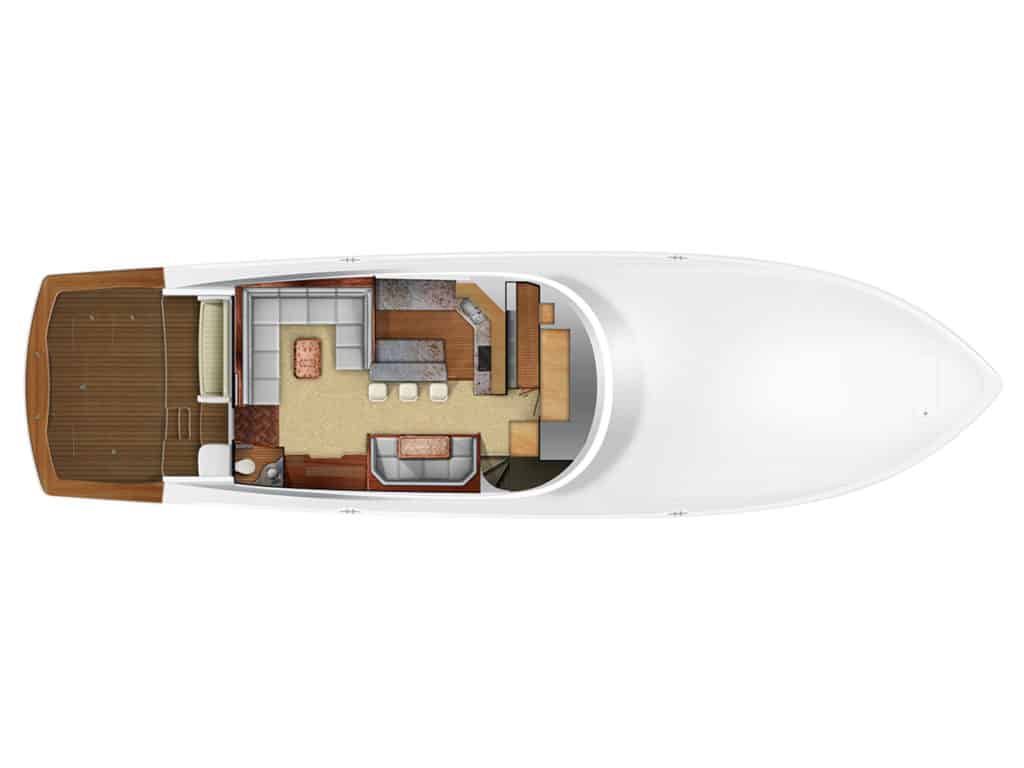
Interior
There is no rule that says one cannot be comfortable on a no-nonsense sport-fishing machine. Viking’s interpretation of that directive is to put things over the top.
With an American walnut motif running throughout the salon, galley and living accommodations below, the William Bales and Company interior reflects an elegance that is as personal as its owner’s wish.
There is a day-head at the starboard entrance door to the salon — a standard Octoplex display is on the bulkhead here — and a U-shaped seating area is located to port. The well-equipped galley forward and to port has three stool seats and runs in a fore-aft direction. A dinette is opposite and offers additional seating, as well as a large drawer for fishing-rod storage beneath.
The stairs leading to the accommodations area is to starboard and offers access to the engine room to port, plus the four-stateroom, four-head configuration below. That extra space of the 72C is quite apparent here too. And whether in the forepeak VIP, the two portside quarters, or the master, I found more than ample and comfortable living space, in addition to abundant storage areas.
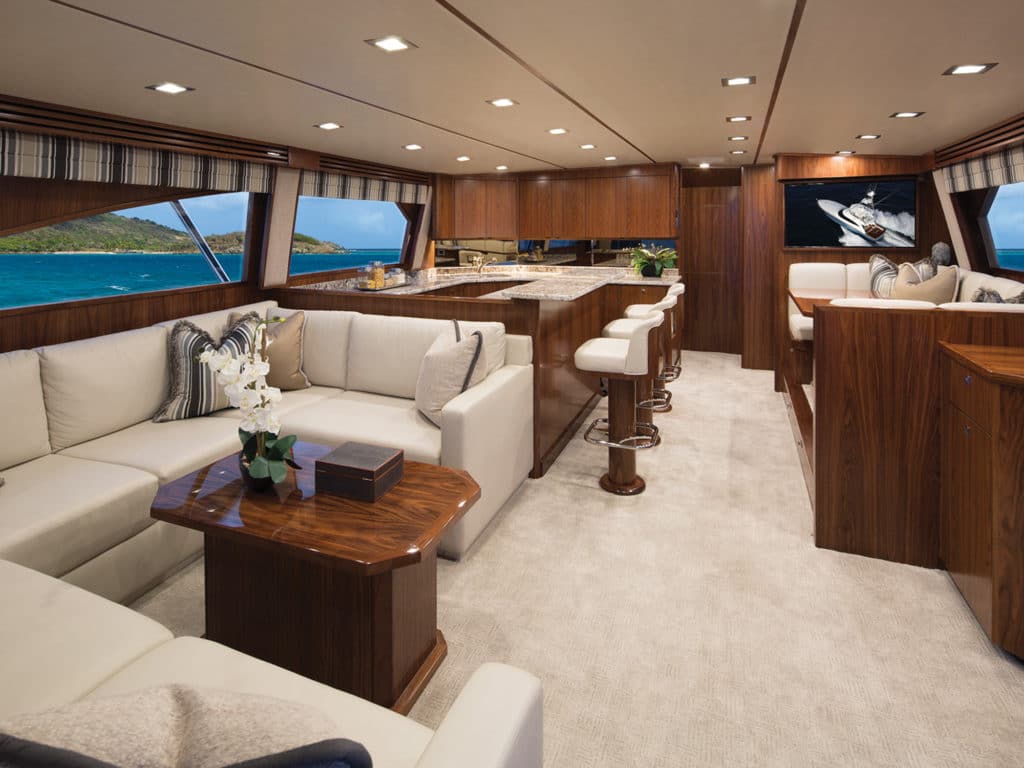
Engine Room
Viking designed her fully Awlgripped engine room so that all the necessary maintenance areas are readily available and tools are accessible. Every piece of equipment has its place. Besides those big, center-stage MTUs, there are a pair of 29 kW Onan gensets, Dometic air conditioning and Spot Zero water-treatment system, and a Sea Recovery 1,400 gpd watermaker, among other essential equipment.
Performance
Before we take off, I have a chance to look at her from a side profile, where I can see the results of a major design change: There was no step chine aft. “This is our new-generation bottom that can also be seen on the new 92, 80, 62, and 52 models,” Higgins says.
The 72C is now full beam at the transom, with the chine moved up farther. “You can see how it incorporates up and fades away underneath the waterline,” Healey says. “The result is seen in the boat’s outstanding performance that is as good as, if not better than, the 70C — even with the 72C being 5,000 to 6,000 pounds heavier.” And this boat is equipped with a Seakeeper 26 in a dedicated space in the cockpit — all new Vikings now come with this compartment built into the mold and feature a different laminate in the stringer system from the transom to the engine room to absorb the kind of torque the gyro is putting out — so I was eager to see just how she would handle the extra weight.
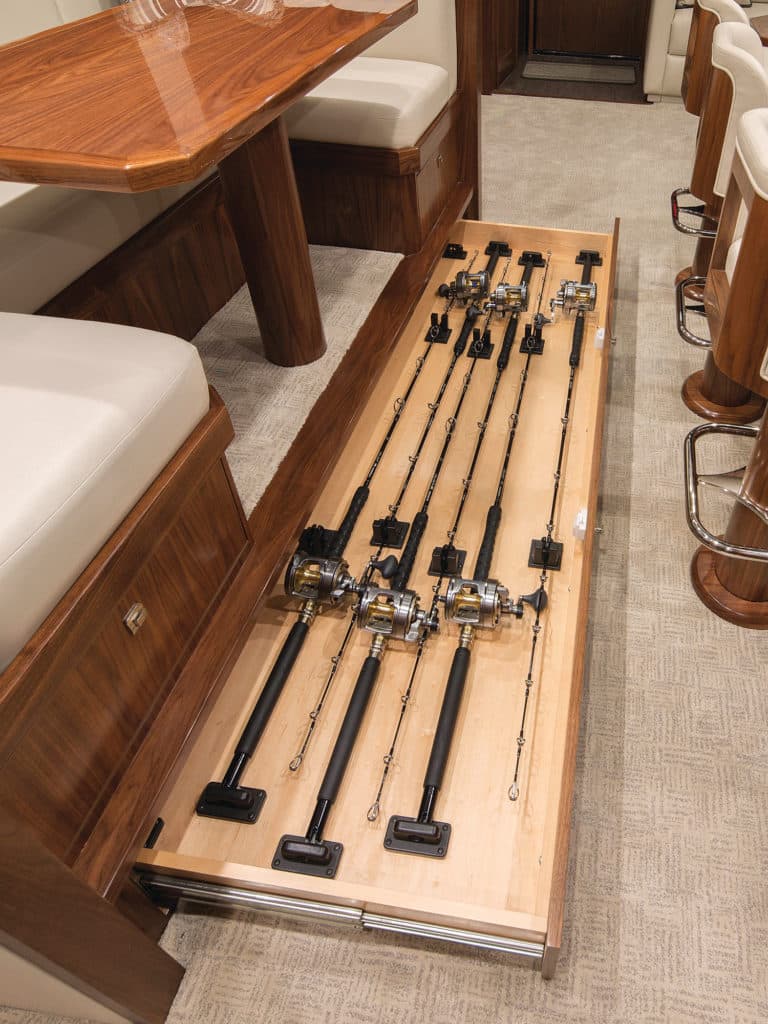
Several words come to mind as Higgins maneuvers her out to sea: assertive, forceful, dynamic. And it was all too clear that with Viking’s design and engineering, alongside a pair of 2,635 hp MTU 16V Series 2000 M96L power plants and the zero-shifting delay of the ZF SuperShift transmissions, those terms would soon be wholly realized and surpassed.
A superior boat design and awesome performance: For a horizon-chasing sport-fishing boat, it’s the kind of combination that tips the scales in favor of her and her crew when prowling the tourney circuit or, while on her own, hunting the deep waters and working the thermoclines.
As Higgins checks his surroundings — the sea is about as flat calm as could be — he begins to slide the throttles forward, and we go from idle to 1,850 rpm in about 10 seconds. The 72C rises up out of the water without any effort and hits a steady cruise of 34 knots at 73 percent load.
The 72C is equipped with the next generation of Viking’s VIPER steering system. The touchscreen on the helm displays the independent rudder reference units, which now deliver the electronic signal to each ram independently. Unlike the first-generation VIPER, these components are built right into both steering rams.
And so what is the result of all this high-tech engineering and balance between design and power? As soon as I get my hands on the wheel, I find out.
Quick, effortless response to all helm commands, awesome in flat-out runs (my day sees a top-end speed of 45.6 knots) and amazing control when in tight turns or carving long, slow changes in direction — she has the same agility when backing down on our “trophy fish.” The Viking 72C truly offers the kind of performance worthy of her pedigree.
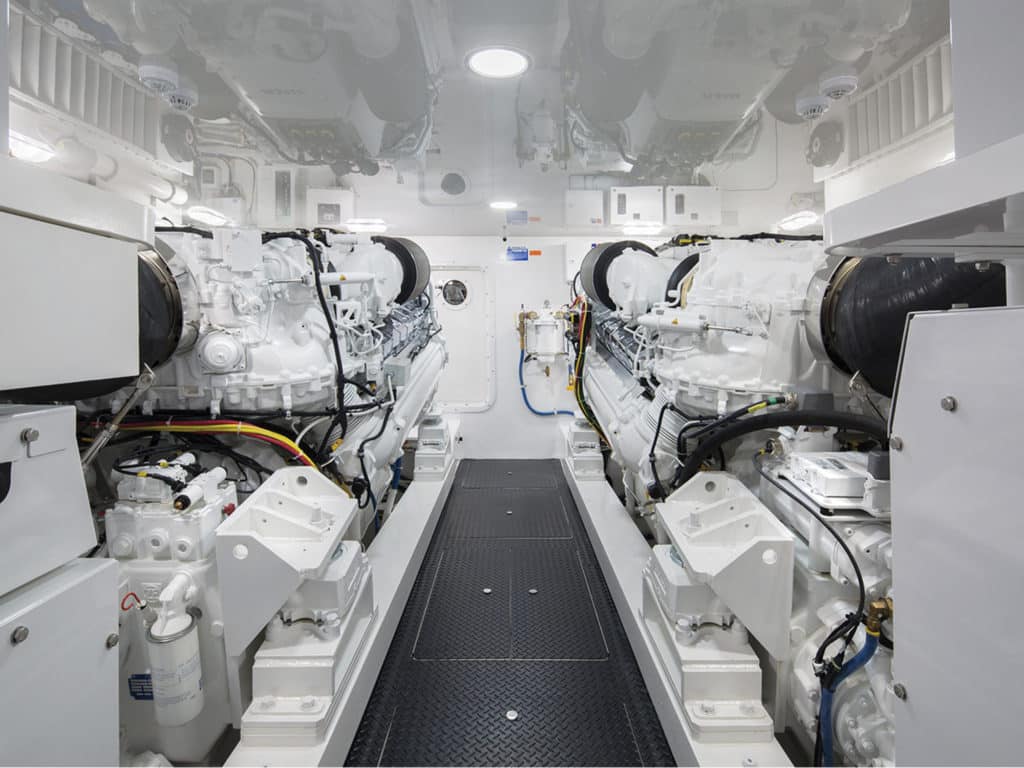
Bridge
Elegantly utilitarian, the bridge presents its captain, owner and guests with a comfortable platform from which to observe all the action. Seating abounds along with storage space, and the centerline helm is as complete as any on the market.
The Atlantic Marine Electronics package comes with all the requisite equipment, including Furuno 25 kW radar, RD33 data organizer and FCV1200BB sounder; Garmin GPSMap 8212 plotter, GHP 20 autopilot and GSD 26 sounder; KEP glass-bridge marine monitors; and FLIR M625L thermal imaging, among many other important and necessary devices. And atop is a well-profiled tower by Palm Beach Towers.
Construction
Like all the new Vikings, the laminate schedule incorporates carbon fiber and eliminates the steel I-beams in the engine room in favor of aluminum saddles over the foam-cored stringers. It also infuses the hull and many other parts of the build.
The resin-infused hull offers Baltek end-grain balsa and Airex foam cores, and the bulkheads are built with vacuum-bagged composites.
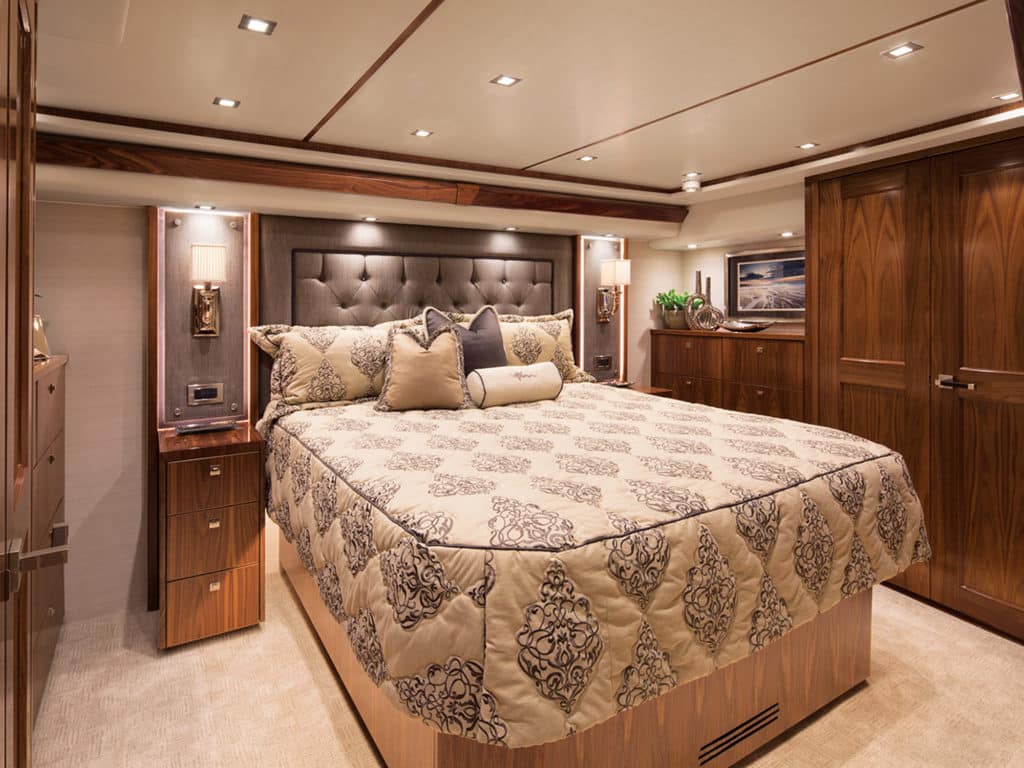
Bottom Notes
“As with everything here, we are very proud of her,” says David Wilson, the company’s design manager.
Using the baseline of previous boats, Wilson sought not only to replace the performance of the 70C, but also to surpass it. To accomplish that — to get that extra room in the master as well as in the cockpit and other critical areas — Wilson, Healey, Lonni Rutt, Viking’s VP of Engineering and Design, and the rest of the Viking think tank had to deal with the extra weight, new engines, and the structural and lamination changes necessary for the new 72-footer.
“There’s a real smooth transition from the some-40-degree entry to about 11.5 degrees of deadrise at the transom,” Wilson says. “From 70 feet to 72 feet, I’m going in the right direction with room to move. The buttock lines and my water planes on the boat are all working to my advantage.”
The pedigree of Viking is present throughout the 72C. But now, with 3 inches gained on the chine beam, a finessed center of gravity aft and a bit more planing area, it’s only better.
